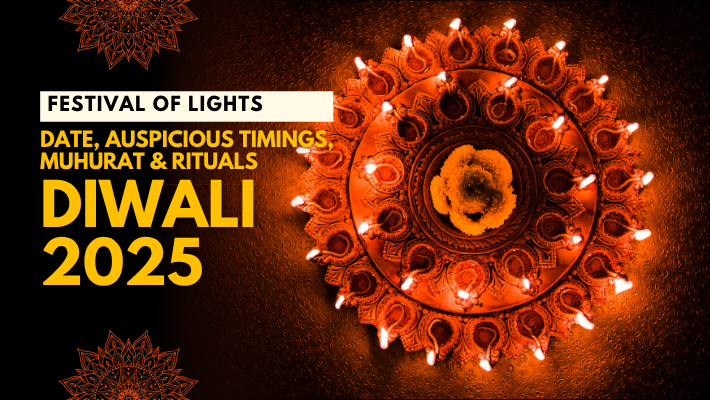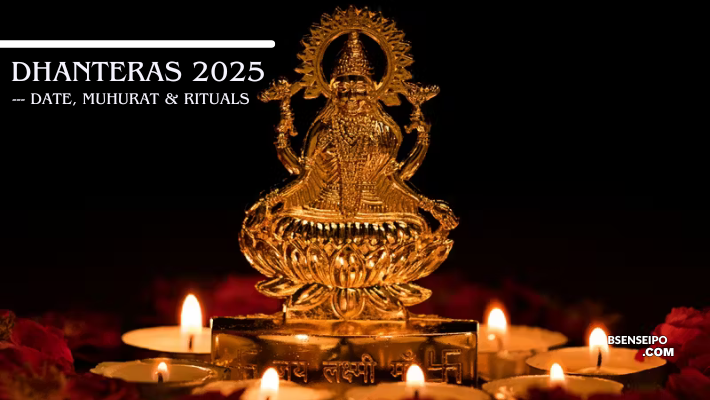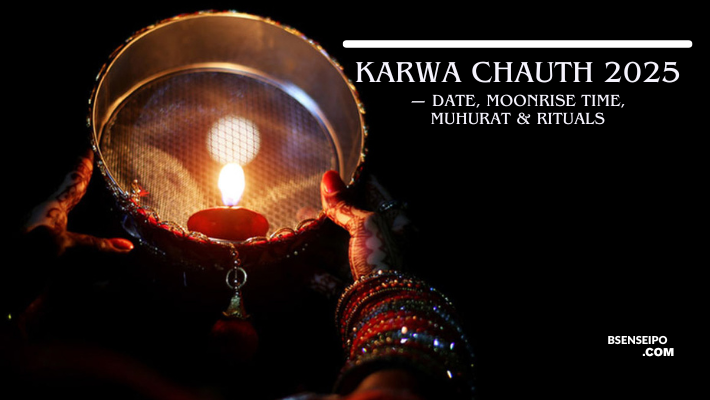Deepavali 2025: Full Guide to Puja Muhurat, Significance & Traditions
Diwali (Deepavali) is one of the most beloved and widely celebrated Hindu festivals — symbolizing the victory of light over darkness, good over evil, and knowledge over ignorance. In 2025, the festival will be observed with full fervour across India and by Indian communities worldwide. This guide covers the date, auspicious timings (muhurat), the five-day schedule, rituals, significance, and tips to celebrate meaningfully.
Diwali Date & Tithi 2025
- In 2025, Diwali (Lakshmi Puja / main Deepavali) falls on Tuesday, 21 October 2025.
- The Amavasya Tithi (new moon day) that corresponds with Diwali begins on 20 October at 12:11 AM and ends on 21 October at ~ 10:43 PM.
- Note: Some confusion may arise because Amavasya overlaps days; however, astrologers and panchangs widely announce 21 October as the Diwali day for performing Lakshmi Puja.
Diwali 2025 Muhurat & Auspicious Timings
Here are some of the key muhurats (auspicious windows) for 2025 Diwali – these are for general guidance and may vary by location:
- Lakshmi Puja Muhurat (Main Diwali Evening): ~ 7:08 PM to 8:18 PM IST on 21 October 2025.
- The ideal puja time is often chosen in the Pradosh Kaal (evening time after sunset) on Diwali when Amavasya tithi is active in the evening hours.
- Panchang sources also mention that Diwali Puja is done after sunset and that the Pradosh period (right after sunset) is considered spiritually favorable.
- The DrikPanchang / Astrologer site for Delhi lists Diwali 2025 for Delhi in its Diwali calendar page, affirming 21 October as the date.
Because Diwali is based on lunar phases, moonrise times are not typically central to the Diwali Puja ritual (unlike some other festivals). Instead, performing the puja during the correct tithi + muhurat (in the evening) is more important.
The Five-Day Diwali Schedule & Key Rituals
Diwali is not just one night — it is a series of days each dedicated to various rituals. Here’s a 2025 schedule and ritual overview:
| Day | Name | Date | Key Rituals & Observances |
|---|---|---|---|
| Day 1 | Dhanteras / Dhantrayodashi | Saturday, 18 October 2025 | Worship of Goddess Lakshmi, Lord Dhanvantari, and Lord Kuber. Buying new metal items (gold, silver, utensils) is considered auspicious. Homes are cleaned and decorated. |
| Day 2 | Narak Chaturdashi / Choti Diwali / Kali Chaudas | Sunday, 19 October 2025 | Early morning sacred bath (Abhyanga Snan), lighting diyas, and minor pujas. In many places, this is considered “Choti Diwali.” |
| Day 3 | Diwali / Lakshmi Puja (Main Day) | Tuesday, 21 October 2025 | The core night: Lakshmi-Ganesha Puja, lighting diyas, worship, offerings, family gatherings, and festive feasts. |
| Day 4 | Govardhan Puja / Annakut / Padwa | Wednesday, 22 October 2025 | Worship of Lord Krishna lifting Govardhan Hill; offering of Annakut (56 or more food items) to deities; also known as Padwa in some regions. |
| Day 5 | Bhai Dooj / Yama Dwitiya | Thursday, 23 October 2025 | Sisters pray for the well-being of their brothers, perform tilak ceremonies, exchange gifts, and offer prayers. |
Note: Some sources list slight shifts in the days (e.g. Diwali on 20 October vs 21). Most reliable panchangs and astrologers currently observe 21 October as the Lakshmi Puja day.
Rituals, Vidhi & Customs
Below is a more detailed walkthrough of what many households observe during Diwali:
Preparations Ahead
- Cleaning & decoration: Homes are thoroughly cleaned, painted, and decorated with rangoli, flowers, torans (door hangings) and lights.
- Lighting & Diyas: Many types of lamps (earthen, ghee, or oil) are placed around the house, windows, balconies, and especially near puja area and entrances.
- Buying new items: Purchasing new household or metal items (especially gold, silver, utensils) on Dhanteras is considered auspicious, to invite prosperity.
- Arranging Puja items: Puja thali (plate) is prepared with idols / images of Goddess Lakshmi, Lord Ganesha, incense, flowers, sweets, fruits, kumkum, rice, coins, diya, akshat (unbroken rice), etc.
Lakshmi-Ganesha Puja (Main Diwali Night)
- Invocation: First, worship Lord Ganesha (for remover of obstacles), then Goddess Lakshmi (wealth) and sometimes Lord Kuber (treasury of gods).
- Mantras & Hymns: Recitation of Lakshmi mantras, Ganesha mantras, Sri Suktam, chanting Om Shreem Mahalakshmiyei Namah, Om Gan Ganpataye Namah, etc.
- Offering Naivedya: Offer sweets, fruits, and dishes as naivedya to the deities.
- Lighting Diyas: Light the lamps, especially around puja area, on windows, porches, and walkways.
- Aarti & Prasad: Perform aarti with camphor or ghee lamp, distribute prasad (blessed food) to family members.
- Lakshmi Vandana & Prayers: Seek blessings for wealth, health, peace, and prosperity for home and family.
- New Account Books / Business Rituals: In merchant / business households, Chopda Puja (worshiping account books) might also be done shortly after the Lakshmi Puja.
- Lighting Fireworks: After puja, fireworks and crackers are traditionally burst (depending on local regulations and environment considerations).
- Charity / Daan: Many donate food, clothes, money, or help the needy as part of Diwali dharma.
Post-Puja Observances & Next Days
- Govardhan Puja / Annakut: On the next day, devotees prepare large food offerings to Krishna and raise symbolic Govardhan Hill.
- Bhai Dooj / Yama Dwitiya: Sisters apply tilak to brothers, pray for their long life, and exchange gifts.
- Sustained lights: Lamps and diyas may stay lit to mark ongoing positivity.
- Visits & Feasting: Family visits, festive meals, sweets and gift exchanges are part of the social dimension of Diwali.
Diwali Significance & Symbolism
- Diwali is rooted in mythological stories: among them, Lord Rama’s return to Ayodhya after 14 years of exile, with the citizens lighting the city in joy.
- In many regions, Diwali also coincides with Naraka Chaturdashi (victory of Krishna over demon Narakasura).
- The festival is symbolic of inner light, spiritual awakening, dispelling ignorance, and renewing bonds of family, community, and faith.
- It is also a festival of prosperity, invoking Goddess Lakshmi’s blessings for wealth and abundance.
- Diwali is celebrated not only by Hindus but also by Jains (marking Mahavira’s Nirvana), Sikhs (Bandi Chhor Divas), and in some parts by Buddhists, each with their own legends.
- The five-day span allows each day to carry specific virtues (health, wealth, victory, justice, relationships).




